
How to Use NUCLEO-G071RB: Examples, Pinouts, and Specs
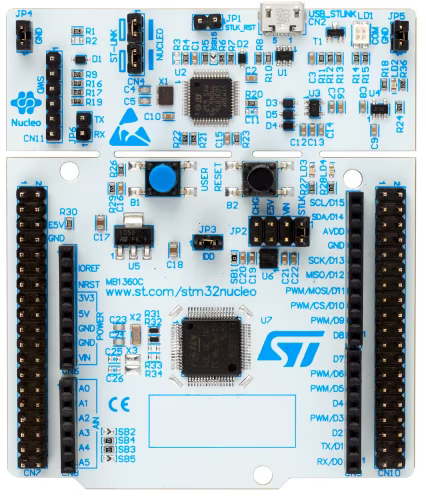
 Design with NUCLEO-G071RB in Cirkit Designer
Design with NUCLEO-G071RB in Cirkit DesignerIntroduction
The NUCLEO-G071RB is a development board manufactured by Nucleo, featuring the STM32G071RB microcontroller. This microcontroller is based on the 32-bit ARM Cortex-M0+ core, offering a balance of performance and power efficiency. The board is designed to provide a flexible and cost-effective platform for prototyping and developing embedded applications. It supports a wide range of peripherals, including GPIO, ADC, UART, SPI, I2C, and more. Additionally, the NUCLEO-G071RB is compatible with the Arduino ecosystem, making it easy to integrate with various expansion boards and shields.
Explore Projects Built with NUCLEO-G071RB
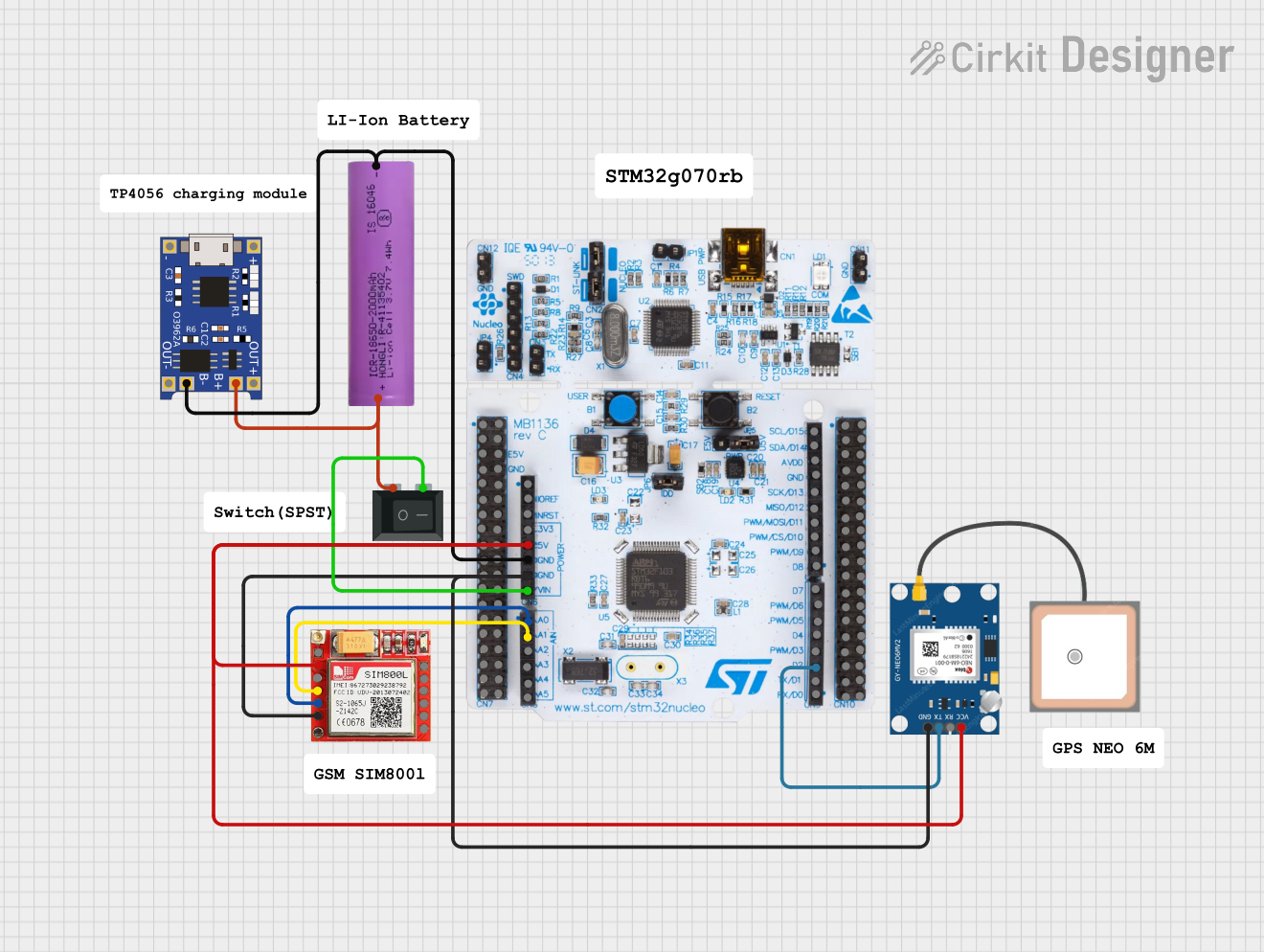
 Open Project in Cirkit Designer
Open Project in Cirkit Designer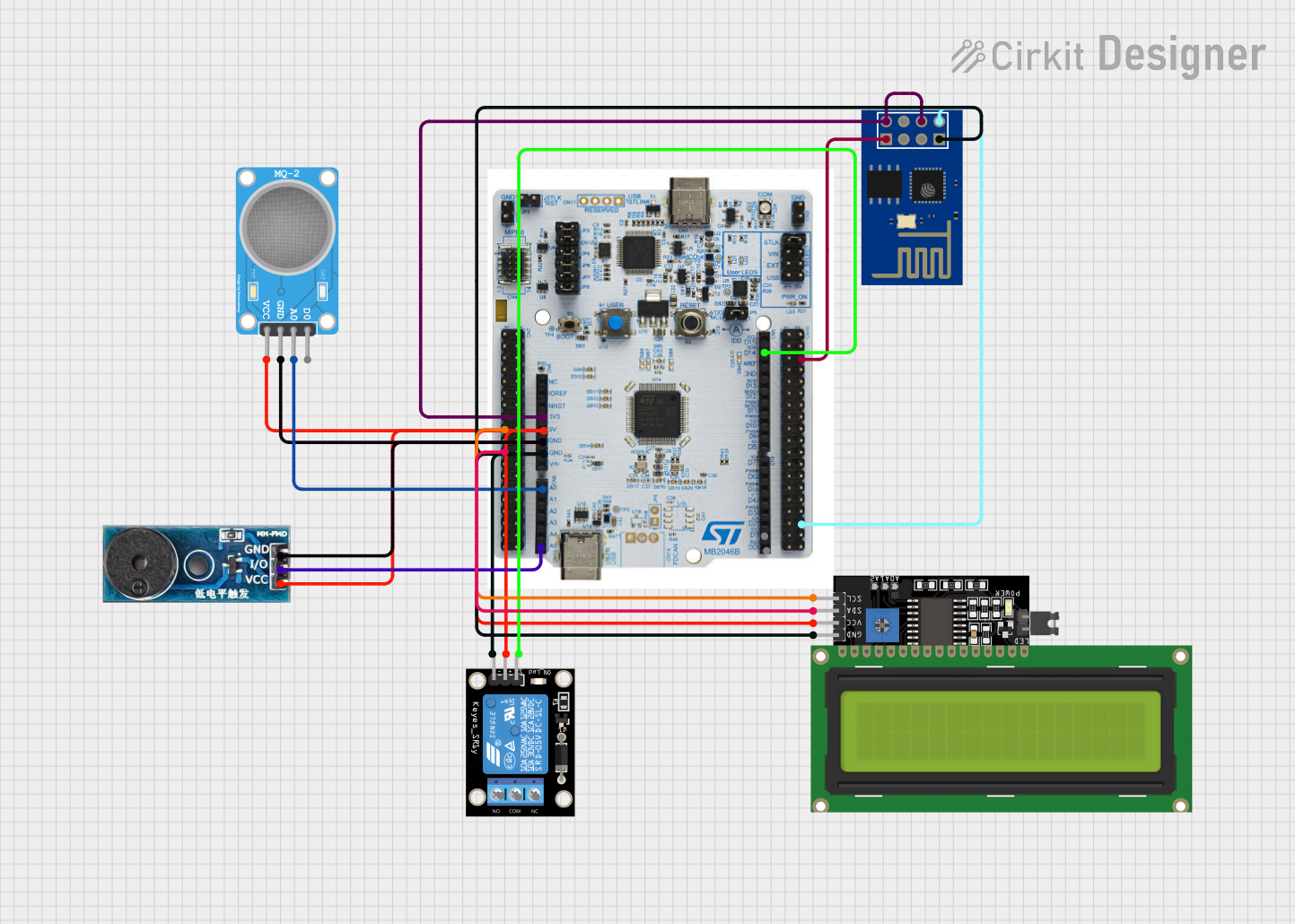
 Open Project in Cirkit Designer
Open Project in Cirkit Designer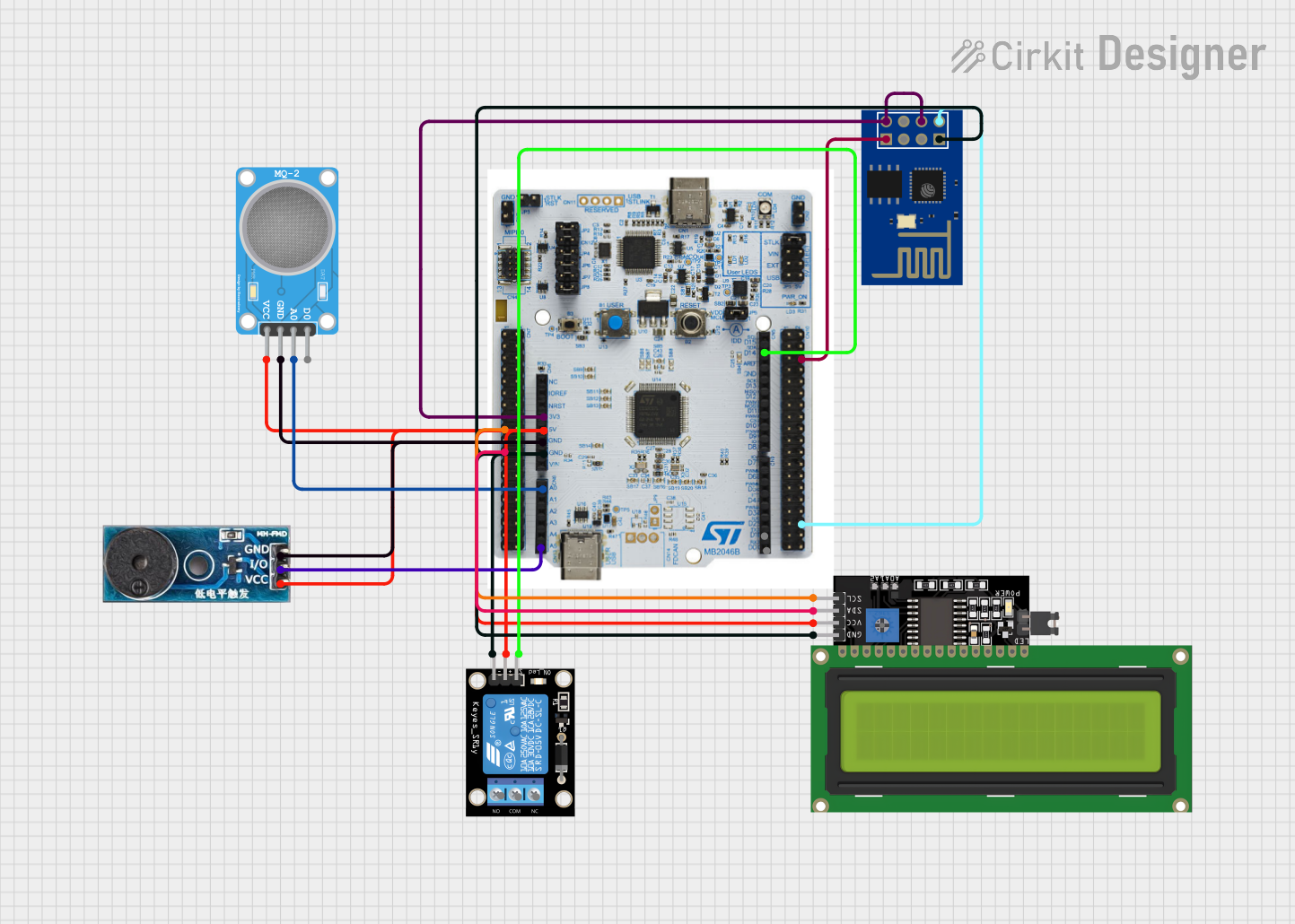
 Open Project in Cirkit Designer
Open Project in Cirkit Designer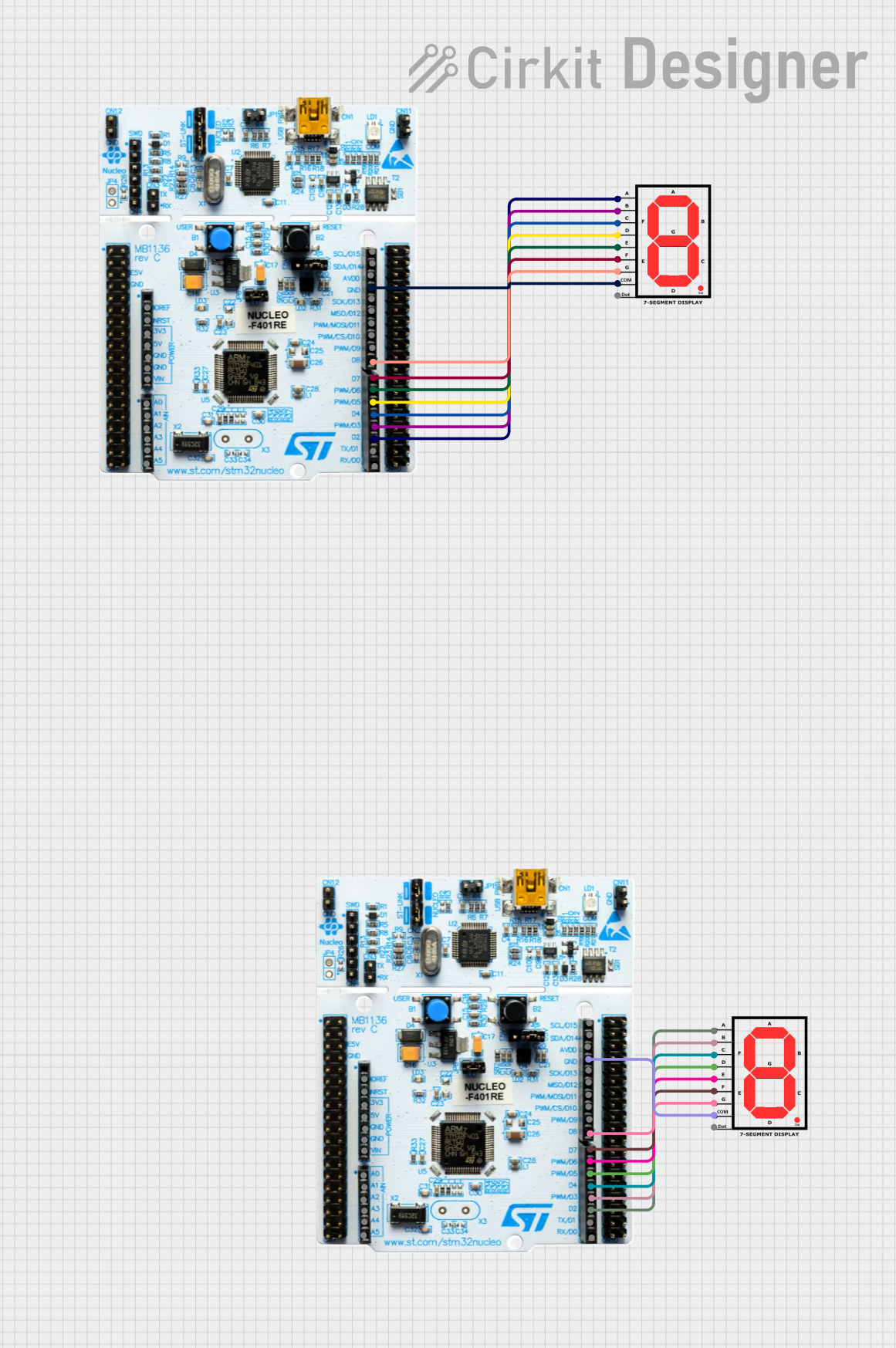
 Open Project in Cirkit Designer
Open Project in Cirkit DesignerExplore Projects Built with NUCLEO-G071RB

 Open Project in Cirkit Designer
Open Project in Cirkit Designer
 Open Project in Cirkit Designer
Open Project in Cirkit Designer
 Open Project in Cirkit Designer
Open Project in Cirkit Designer
 Open Project in Cirkit Designer
Open Project in Cirkit DesignerCommon Applications
- IoT (Internet of Things) devices
- Industrial automation and control systems
- Consumer electronics prototyping
- Educational and research projects
- Low-power embedded systems
Technical Specifications
Key Technical Details
| Parameter | Specification |
|---|---|
| Microcontroller | STM32G071RB (ARM Cortex-M0+, 32-bit, 64 MHz) |
| Flash Memory | 128 KB |
| SRAM | 36 KB |
| Operating Voltage | 3.3V (core), 5V (external power supply via USB or VIN) |
| Input Voltage Range | 7V to 12V (via VIN pin) |
| Communication Interfaces | UART, SPI, I2C, CAN, USB 2.0 Full-Speed |
| GPIO Pins | 51 (including analog-capable pins) |
| ADC | 12-bit, up to 16 channels |
| DAC | 12-bit, 2 channels |
| Clock Speed | Up to 64 MHz |
| Debugging Interface | ST-LINK/V2-1 (onboard debugger and programmer) |
| Compatibility | Arduino Uno R3 pinout, ST morpho connectors |
| Dimensions | 68.6 mm x 53.3 mm |
Pin Configuration and Descriptions
The NUCLEO-G071RB features multiple pin headers, including Arduino-compatible headers and ST morpho connectors. Below is a summary of the pin configuration:
Arduino-Compatible Header Pinout
| Pin Name | Functionality | Description |
|---|---|---|
| A0-A5 | Analog Input | 12-bit ADC channels |
| D0-D13 | Digital I/O | General-purpose digital I/O pins |
| PWM Pins | D3, D5, D6, D9, D10, D11 | PWM output pins |
| VIN | Power Input | External power supply input (7V-12V) |
| 3.3V | Power Output | 3.3V regulated output |
| 5V | Power Output | 5V regulated output |
| GND | Ground | Ground connection |
| RESET | Reset | Resets the microcontroller |
ST Morpho Connector Pinout
| Pin Name | Functionality | Description |
|---|---|---|
| PA0-PA15 | GPIO, ADC, UART, SPI, I2C, etc. | General-purpose I/O and peripheral functions |
| PB0-PB15 | GPIO, ADC, UART, SPI, I2C, etc. | General-purpose I/O and peripheral functions |
| PC0-PC15 | GPIO, ADC, UART, SPI, I2C, etc. | General-purpose I/O and peripheral functions |
Usage Instructions
How to Use the NUCLEO-G071RB in a Circuit
Powering the Board:
- Connect the board to your computer via the micro-USB cable for power and programming.
- Alternatively, supply power through the VIN pin (7V-12V) or the 5V pin.
Programming the Board:
- Use the onboard ST-LINK/V2-1 debugger to program the microcontroller.
- Compatible IDEs include STM32CubeIDE, Keil MDK, and IAR Embedded Workbench.
- For Arduino users, install the STM32 core in the Arduino IDE.
Connecting Peripherals:
- Use the Arduino-compatible headers to connect shields or external modules.
- For advanced applications, use the ST morpho connectors to access additional pins and peripherals.
Uploading Code:
- Write your code in the chosen IDE and compile it.
- Upload the code to the board via the ST-LINK interface or USB.
Important Considerations and Best Practices
- Ensure the input voltage does not exceed the specified range to avoid damaging the board.
- Use decoupling capacitors when connecting external components to reduce noise.
- Avoid connecting high-current loads directly to GPIO pins; use transistors or relays instead.
- When using the Arduino IDE, ensure the correct board and port are selected in the settings.
Example Code for Arduino IDE
The following example demonstrates how to blink an LED connected to pin D13:
// Blink an LED on pin D13 (built-in LED on the NUCLEO-G071RB)
void setup() {
pinMode(LED_BUILTIN, OUTPUT); // Set the built-in LED pin as an output
}
void loop() {
digitalWrite(LED_BUILTIN, HIGH); // Turn the LED on
delay(1000); // Wait for 1 second
digitalWrite(LED_BUILTIN, LOW); // Turn the LED off
delay(1000); // Wait for 1 second
}
Troubleshooting and FAQs
Common Issues and Solutions
The board is not detected by the computer:
- Ensure the USB cable is functional and supports data transfer.
- Check that the ST-LINK driver is installed on your computer.
Code upload fails:
- Verify that the correct board and port are selected in the IDE.
- Ensure no other application is using the ST-LINK interface.
Peripherals are not working as expected:
- Double-check the pin connections and configurations in your code.
- Ensure the peripheral's voltage and current requirements are within the board's limits.
The board overheats:
- Check for short circuits or excessive current draw from connected components.
- Ensure the input voltage is within the specified range.
FAQs
Q: Can I use the NUCLEO-G071RB with Arduino shields?
A: Yes, the board is compatible with Arduino Uno R3 shields via its Arduino headers.
Q: Does the board support low-power modes?
A: Yes, the STM32G071RB microcontroller supports multiple low-power modes for energy-efficient applications.
Q: How do I reset the board?
A: Press the RESET button on the board or use the software reset functionality in your code.
Q: Can I use the board for CAN communication?
A: Yes, the STM32G071RB microcontroller includes a CAN interface, accessible via the ST morpho connectors.